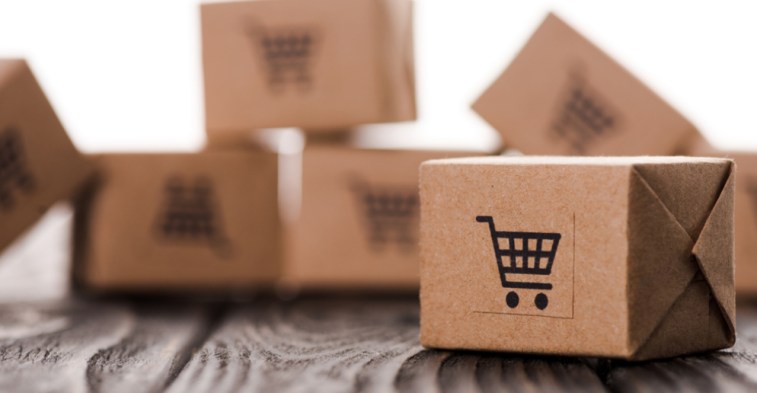How E-commerce is Driving New Trends in Global Trade and Logistics
The rise of e-commerce has fundamentally transformed the way goods are bought and sold across the globe. From small local businesses to large multinational corporations, online retail has opened up new markets and opportunities, driving significant changes in global trade and logistics. With more consumers embracing the convenience of online shopping, businesses are adapting to meet the increasing demands for fast, reliable, and efficient delivery. This shift is not only reshaping trade routes but also pushing for innovations in logistics, supply chain management, and sustainability, driven by factors like online banking, digital payments, and increased internet penetration worldwide. Consegic Business Intelligence analyses Online Banking Market size is estimated to reach over USD 48,820.39 Million by 2031 from a value of USD 16,819.81 Million in 2023, growing at a CAGR of 14.2% from 2024 to 2031.
Read also: E-Commerce and the Rise of the Sharing Economy in Logistics
E-commerce platforms have made it easier than ever for businesses to expand beyond domestic borders, leading to a surge in cross-border trade. Online marketplaces like Amazon, Alibaba, and eBay have facilitated international sales, allowing even small businesses to tap into new markets. Key drivers behind this growth include competitive pricing, diverse product availability, and the convenience of shopping from anywhere in the world, with goods ranging from electronics to fashion being shipped globally. This trend has also led to new trade routes and partnerships, pushing businesses to adapt to international logistics requirements, including customs regulations and shipping protocols.
The rise of e-commerce has prompted businesses to rethink and evolve their supply chain strategies. Traditional supply chains were designed for bulk distribution to retail stores, but e-commerce demands smaller, more frequent deliveries directly to consumers. To meet this demand, companies have adopted models such as just-in-time and lean inventory, which minimize storage costs while ensuring product availability. Furthermore, real-time data analytics and predictive forecasting are now used to optimize inventory management, anticipate demand, and streamline order processing. These new approaches have improved efficiency and reduced costs, but they also require greater agility and coordination between suppliers, manufacturers, and logistics providers.
Technology has been a game-changer in e-commerce logistics. Innovations such as artificial intelligence (AI), the Internet of Things (IoT), and robotics have enhanced the speed, accuracy, and efficiency of the logistics process. For example, AI is being used for demand forecasting and route optimization, ensuring that deliveries are made faster and more efficiently. IoT enables real-time tracking of goods, allowing businesses and consumers to monitor shipments and address any issues promptly. Additionally, robotics and automation have streamlined warehouse operations, reducing labor costs and minimizing errors. Companies like Amazon and DHL are already using robots in their fulfilment centres to speed up order processing, showcasing how technology is revolutionizing e-commerce logistics.
One of the most significant impacts of e-commerce on logistics has been the shift towards faster and more flexible delivery options. Consumers today expect quick, same-day, or even next-hour deliveries, pushing companies to innovate. This demand has led to the rise of last-mile delivery solutions, which focus on optimizing the final leg of the delivery journey. Companies like Uber Eats and Instacart have capitalized on this trend, offering rapid delivery services for groceries and other essential goods. Additionally, third-party logistics (3PL) providers have expanded their services to support e-commerce businesses, offering everything from warehousing and packaging to transportation and last-mile delivery, allowing businesses to scale efficiently.
While e-commerce has driven innovation, it has also introduced new logistical challenges. Businesses must now navigate complex issues like inventory management, fluctuating consumer demand, and strict customs regulations for international shipments. Moreover, supply chain disruptions, such as those experienced during the COVID-19 pandemic, have exposed vulnerabilities in global logistics networks. To address these issues, companies are investing in more robust supply chain systems, diversifying suppliers, and adopting strategies like drop shipping, which minimizes the need for large inventories. Nevertheless, overcoming these challenges remains a continuous effort as businesses seek to provide seamless shopping experiences for consumers.
Sustainability has become a crucial focus in e-commerce logistics, with companies looking to reduce their carbon footprint. Green initiatives such as eco-friendly packaging, electric delivery fleets, and carbon-neutral shipping options are becoming more prevalent. For instance, companies like UPS and FedEx are experimenting with electric vans and alternative fuels to reduce emissions. Additionally, sustainable practices are not just a matter of corporate responsibility; they also appeal to the environmentally conscious consumers who prefer to support brands with green credentials. As the e-commerce sector grows, sustainability will play a vital role in shaping the future of logistics.
E-commerce has revolutionized global trade and logistics, driving new trends that prioritize speed, efficiency, and sustainability. As consumer expectations continue to evolve, businesses must adapt by embracing advanced technologies, optimizing supply chains, and addressing logistical challenges. The future of global trade will be defined by the ability to innovate and respond quickly to the ever-changing demands of e-commerce, making logistics a critical component of success in the digital age.
Source: Online Banking
Author Bio
I’m Saili, a content writer currently immersed in the vibrant IT and Telecommunications industry at Consegic Business Intelligence. With over 3 years of professional experience, I’ve specialized as a ghostwriter for prominent companies and industry publications, exploring various topics.





Leave a Reply